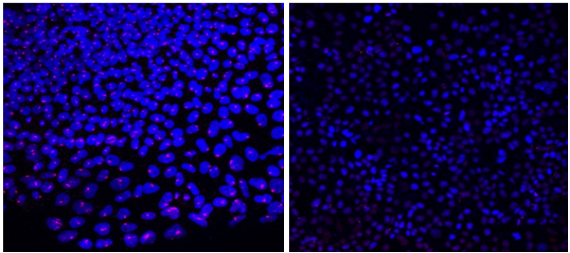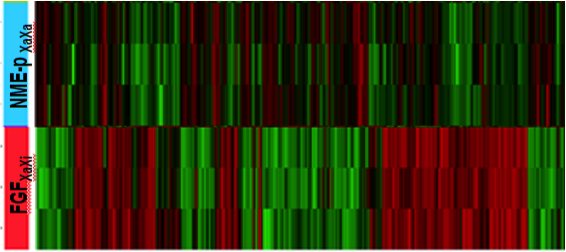A Primitive Growth Factor, NME7AB , Is Sufficient to Induce Stable Naïve State Human Pluripotency; Reprogramming in This Novel Growth Factor Confers Superior Differentiation.
Carter MG, Smagghe BJ, Stewart AK, Rapley JA, Lynch E, Bernier KJ, Keating KW, Hatziioannou VM, Hartman EJ, Bamdad CC. Stem Cells. 2016 Apr;34(4):847-59. doi: 10.1002/stem.2261. Epub 2016 Jan 7.A Primitive Growth Factor, NME7AB , Is Sufficient to Induce Stable Naïve State Human Pluripotency; Reprogramming in This Novel Growth Factor Confers Superior Differentiation.
Abstract
Scientists have generated human stem cells that in some respects mimic mouse naïve cells, but their dependence on the addition of several extrinsic agents, and their propensity to develop abnormal karyotype calls into question their resemblance to a naturally occurring "naïve" state in humans. Here, we report that a recombinant, truncated human NME7, referred to as NME7AB here, induces a stable naïve-like state in human embryonic stem cells and induced pluripotent stem cells without the use of inhibitors, transgenes, leukemia inhibitory factor (LIF), fibroblast growth factor 2 (FGF2), feeder cells, or their conditioned media. Evidence of a naïve state includes reactivation of the second X chromosome in female source cells, increased expression of naïve markers and decreased expression of primed state markers, ability to be clonally expanded and increased differentiation potential. RNA-seq analysis shows vast differences between the parent FGF2 grown, primed state cells, and NME7AB converted cells, but similarities to altered gene expression patterns reported by others generating naïve-like stem cells via the use of biochemical inhibitors. Experiments presented here, in combination with our previous work, suggest a mechanistic model of how human stem cells regulate self-replication: an early naïve state driven by NME7, which cannot itself limit self-replication and a later naïve state regulated by NME1, which limits self-replication when its multimerization state shifts from the active dimer to the inactive hexamer.
Download
Addtional Minerva publications available HERE
 B.
B. 





